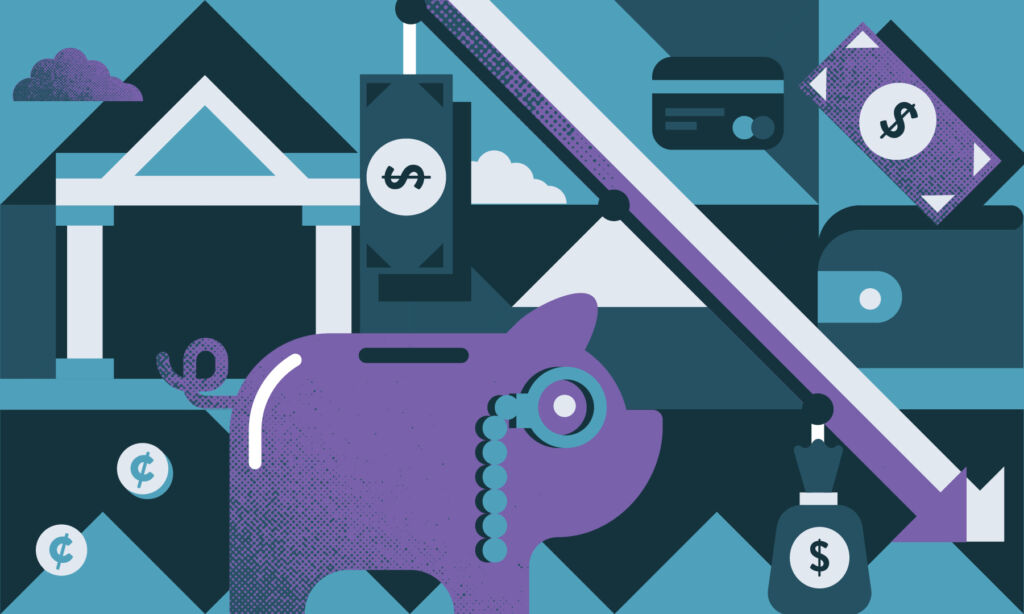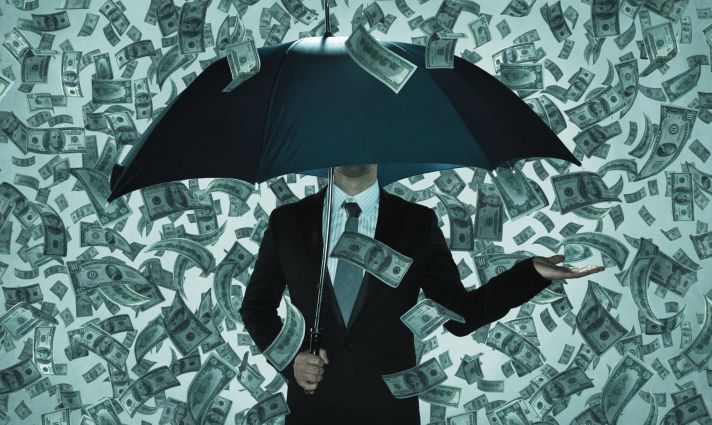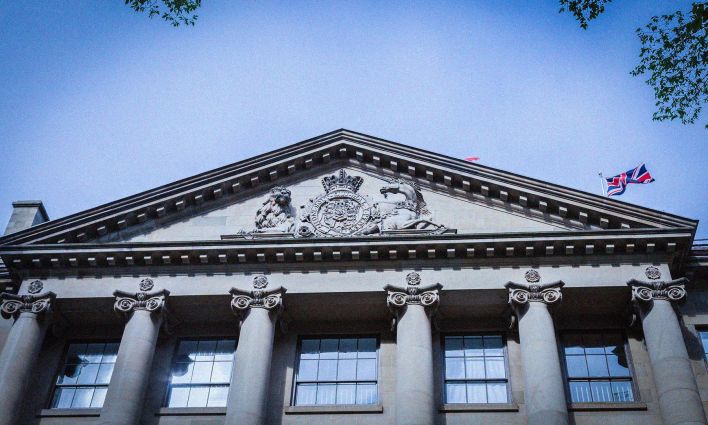In response to the brutal inequality of the 1920s and the Great Depression, and under widespread political pressure after World War II, Canadian and other western governments brought in major reductions in income and wealth inequality through tax and transfer policies.
It was an era of full employment, high taxes on the wealthy, universal Medicare, expanded unemployment insurance, Old Age Security and CPP/QPP pension systems, and other transfers, which significantly reduced inequality.
Canadian society, for the most part, shared in the economic prosperity of the era.
That changed in the late-1970s, with the advent of laissez-faire capitalism (neoliberalism), led by former U.S. President Ronald Reagan and British Prime Minister Margaret Thatcher. According to this ideology, the market was no longer in embedded in society, but society became subservient to the whims of the market and its beneficiaries.
Corporations and wealthy elites were back in the driver seat. Over the next four decades, income and wealth inequality skyrocketed.
Spiralling inequality over four decades
Over subsequent decades, the 1971 highest income tax bracket of 80% dropped by more than half, to 29%. Taxes on capital gains were slashed and tax loopholes were created to facilitate tax avoidance and evasion via an archipelago of tax havens.
Corporate tax rates dropped from 40% in 1980 to 15% in the following decades. Median worker earnings stagnated or fell. Labour’s share of Canada’s GDP declined in relation to capital’s share.
For the top 1%, as a whole, average market income doubled between 1982 and 2018. For the top 0.01%, it soared by 189% during this period. The income of the bottom 50% failed to keep up with inflation.
In the wake of the 2008-09 recession, from 2010 to 2019, only the top 1% increased their share of total wealth, while it fell for everyone else.
The number of Canadian billionaires and their wealth more than doubled. Canada’s club of 100 billionaires now has as much wealth as the 12 million poorest Canadians. The Parliamentary Budget Office projects that, in the second quarter of 2021, there were approximately 161,700 families in the top 1% and they each had a net wealth of at least $7.3 million.
According to the latest Canadian Centre for Policy Alternatives figures, Canada’s average top CEO pay was 191 times greater than the earnings of the average worker in 2020.
The Parliamentary Budget Office estimates Canada’s top 1% hold almost 26% of the country’s total wealth. Its share has jumped by five percentage points over the last two decades. In contrast, the bottom 40% of Canadians hold only 1.2% of total wealth.
The richest 1% hold 15% of national income—almost as much as the bottom 50% of the Canadian population. Since 1981, the gain in income share of Canada’s top 1% has been more than 10 times larger than that of the middle 20%.
Little federal government action to narrow the inequality gap
Shortly after coming to power in 2015, Prime Minister Justin Trudeau, speaking in Germany in 2017, acknowledged the anxiety and resentment of government due to income increasing income and wealth inequality. Yet during the last six years that this federal government has been in power, it has done little to narrow the income and wealth gap.
Budget 2022 is no exception.
It does two things to tax wealthy corporations: (1) It imposes a one-time 15% excess profits tax on taxable income above $1 billion for banks and life insurance companies, yet the vast majority of companies in Canada registering that level of profit—in oil and gas, tech and groceries—will not incur new excess profit taxes. The amount of excess profits for the banks is $16.1 billion and for oil and gas sector it’s $24.2 billion. These excess profits are contributing to current inflation. (2) The budget also imposes a permanent 1.5% tax increase, to 16.5%, on the same companies for income above $100 million.
Aside from those two measures, there is still no wealth tax on the super-rich.
No increase in the top income tax bracket, beyond the 33% tax bracket implemented in its 2016 budget.
No general corporate income tax increase.
No elimination of the tax break for capital gains and dividends.
No estate or inheritance tax on assets over $2 million to limit family dynasties’ ability to pass down exorbitant wealth to their descendants.
No minimum 15% effective tax rate on the top 1%, as previously promised.
No surtax on Canadian billionaires profiteering from the pandemic.
No significant clamping down on tax avoidance and evasion by corporations and the wealthy via a spider’s web of tax havens.
According to the Canada Revenue Agency, some $3 billion of annual tax revenue is lost from the untaxed investment income that wealthy Canadians have squirrelled away in offshore tax shelters. The budget has not delivered on a General Anti-Avoidance Rule regime to avoid corporate tax dodging via tax havens, but it does commit to a public searchable registry of the beneficial owners of companies and trusts, an important tool in fighting tax avoidance.
Economist Lars Osberg proposed that the federal government increase its top income tax rate to 65%. CCPA Senior Economist David Macdonald estimates that a 45% tax on estates in excess of $5 million would add over $2 billion to federal revenue. Eliminating the 50% tax break for capital gains and the 25% tax rate on dividends would, respectively, raise $11 billion and $5 billion annually and would exclusively target Canada’s richest.
What measures has the government brought in on the income transfer/support front—either universal or targeting the low-income groups?
The Canada-wide Early Learning and Child Care System now in place across all provinces, implemented in the 2021 budget, is a major accomplishment. Spending for this one initiative is roughly equivalent to total net spending in Budget 2022—$31 billion. This is in addition to the enhanced Canada Child Benefit implemented in an earlier budget.
The dental care program phased in for children under 12, a pillar of the NDP’s supply-and-confidence agreement with the Liberals, begins to fulfill the 60-year-old vision of Canada’s universal Medicare founders. What has been dispersed thus far—$5.3 billion over five years—is a small down payment on what’s needed to create a fully functioning program.
Pharmacare, a Liberal promise dating back to the 1990s—another NDP demand in the joint accord—is absent in this budget; delayed until next year or longer. A study in the Canadian Medical Association Journal found that because of the cost of prescription drugs, 730,000 Canadians went without basic needs such as food, 238,000 could not afford to heat their house, and 239,000 couldn’t pay for other health care expenses.
One-third of all new spending in this budget—$10 billion over five years—is allocated to address housing and stratospheric price increases. It has been received with mixed reviews. Consisting of yet-to-be developed, largely market-based initiatives, its ability to provide affordable housing supply is uncertain. There is, however, funding for cooperative housing and for an Indigenous housing strategy.
Finally, the budget contains no funding to increase CPP, OAS and GIS, no funding for promised long-term care, for disability benefits, nor for most of the promised improvements to the Employment Insurance system.
Modest steps
Budget 2022 and its predecessors represent modest steps to strengthen the social safety net deemed acceptable to the “plutocracy—those at the pinnacle of wealth and power; and their political enablers.” It does virtually nothing to narrow the income and wealth gap.
Richard Wilkinson and Kate Pickett, in their classic study The Spirit Level: Why Equality Is Better for Everyone, compared the level of inequality of disposable household income among the richest OECD nations along a spectrum of social indicators—including average levels of health status, trust, social mobility, infant mortality, educational performance, violence, obesity, and mental illness. They concluded that, along all these dimensions, in countries where there is more income inequality there are also more social problems.
Canada has deteriorated greatly on the income and wealth concentration scale. Half of Canadians tell pollsters they are one or two missed paycheques away from poverty. Economic growth does not much interest the bottom half of the electorate if all of the gains are going to the top half, with the lion's share going to the top 1%.
Unprecedented inequality is a potent threat. It undermines democracy, breeding anger and resentment against corporate and government elites. It also breeds openness to authoritarian solutions.
Unless those at the top of the wealth and power pyramid recognize the priority of reducing inequality, political instability and violent conflict will fester.







